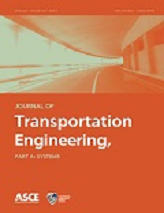
The pandemic of COVID-19 has affected human patterns since December 2019. Since the very beginning, most countries imposed strict measures such as lockdowns and the suspension of all nonessential movements to reduce the spread of the pandemic. Therefore, mobility, road safety, and travel behavior were also significantly affected. At present, many studies tried to investigate travel or mobility behavior changes taking into account all possible transportation modes, but very few studies investigated driving behavior. This study aims to investigate driving behavior and its correlation with the strictness of COVID-19 response measures. Four neural network autoregression (NNAR) models with an external regressor were developed in order to forecast three different future stringency scenarios. NNAR models were employed as the forecasting performance was superior when comparing with statistical autoregressive integrated moving average (ARIMA) models. The NNAR models were developed using driving behavior-related variables (i.e., driving speed, speeding, speeding duration percentage, and mobile use percentage), derived from a smartphone application that has been developed by OSeven Telematics. The NNAR models were trained on 2020 data and three different scenarios were predicted for 2021 by providing three different constant stringency indices (i.e., 0, 55, 85). In particular, normal conditions without restrictions were simulated with zero stringency index, whereas moderate restrictions were simulated with 55 and finally, fully restrictions were simulated with 85. The NNAR modeling results showed that with higher stringency index, mobile use and driving speed tend to increase, whereas speeding duration demonstrates higher peaks. Interestingly, with stricter response measures, lower values were forecasted for speeding. Taking into account the modeling outcomes, there is a direct effect of the COVID-19 response measures on driving behavior. Nevertheless, a wider time frame for data collection as well as the use of more sophisticated techniques to control for the interrelationship between COVID-19 spread and driving behavior might be useful for future studies.
| ID | pj214 |
| DOI | |
| Tags |













